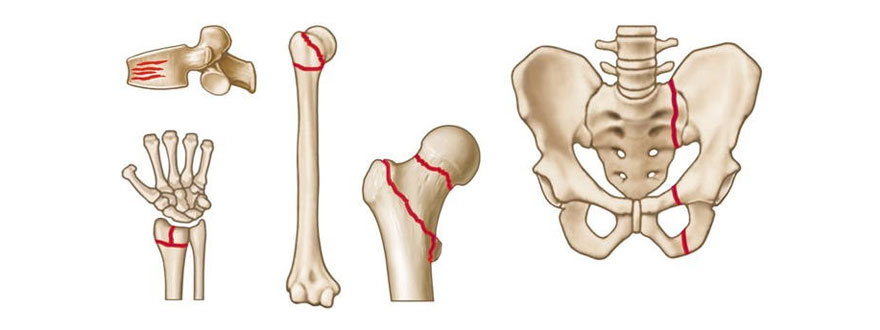osteoporotic fracture

Osteoporotic fractures are fractures that occur as a result of weakened or brittle bones due to osteoporosis, a condition characterized by low bone density and deterioration of bone tissue. These fractures commonly occur in the spine, hip, wrist, and other weight-bearing bones, and they can have serious consequences for mobility, independence, and overall quality of life, particularly in older adults.
Here's an overview of osteoporotic fractures:
- Causes: Osteoporotic fractures occur when the strength and density of the bone decrease significantly, making the bone more susceptible to fractures from minimal trauma or normal stressors. The primary cause of osteoporotic fractures is osteoporosis, a systemic skeletal disorder characterized by a decrease in bone mass and microarchitectural deterioration of bone tissue.
- Risk factors: Risk factors for osteoporotic fractures include:
- Aging: Bone density naturally decreases with age, increasing the risk of fractures, particularly in postmenopausal women and older adults.
- Gender: Women are at higher risk of osteoporotic fractures, especially after menopause, due to hormonal changes that affect bone density.
- Low body weight: Individuals with low body weight or a small frame have less bone mass and are at increased risk of fractures.
- Family history: A family history of osteoporosis or fractures increases the risk of osteoporotic fractures.
- Hormonal factors: Hormonal imbalances, such as low estrogen levels in women and low testosterone levels in men, can contribute to bone loss.
- Certain medications: Long-term use of corticosteroids, anticoagulants, and certain other medications can increase the risk of osteoporotic fractures.
- Symptoms:
- Osteoporotic fractures may cause symptoms such as sudden onset of pain, swelling, bruising, or deformity in the affected area.
- Vertebral fractures can cause back pain, height loss, and changes in spinal alignment (kyphosis).
- Hip fractures typically cause severe pain, inability to bear weight on the affected leg, and difficulty walking or standing.
- Wrist fractures may cause pain, swelling, and limited wrist movement.
- Prognosis: The prognosis for osteoporotic fractures depends on factors such as the type and severity of the fracture, the individual's overall health and mobility, and the effectiveness of treatment and rehabilitation. Prompt diagnosis, appropriate treatment, and comprehensive rehabilitation can help minimize pain, restore function, and improve outcomes for individuals with osteoporotic fractures.


